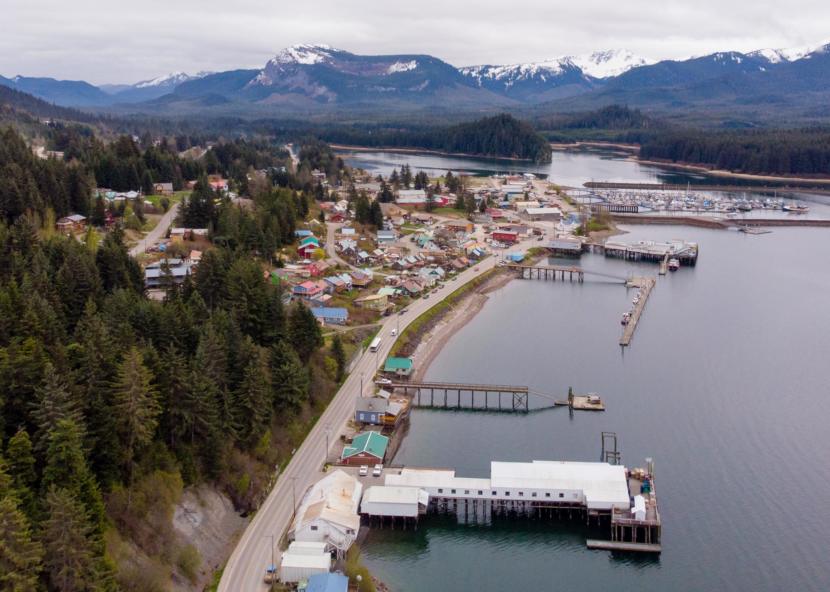
It’s well known that traumatic experiences can have lifelong impacts on health and well-being. But it’s possible that those effects can last longer than a single lifetime. A new study asks whether the effects of trauma have been passed down genetically in Tlingit families in Hoonah.
Much of the history is familiar to rural Alaska Native communities anywhere in the state: children taken from their families and sent to boarding schools, language suppressed. But the Tlingit community of Hoonah has also experienced unique traumas, such as a fire that destroyed much of the town in 1944.
“This major fire that occurred there in the in the ’40s. And Bureau of Indian Affairs was very much involved in our lives, and at the time, they wouldn’t allow them to rebuild clan houses,” Worl said.
Rosita Worl is the president of the Juneau-based Sealaska Heritage Institute (SHI). She’s also an anthropologist. Some of her first work looked at the social and cultural impacts of historical trauma in Alaska Native communities.
“And then now, how many years later, to find out that these changes, these impacts, could change our very physiological being,” said Worl.
Trauma might even affect our DNA, our most basic stuff. And, if that’s the case, those changes could be passed down through families, impacting people generations removed from traumatic events.
It’s a young field of research, and SHI is part of it. The non-profit just launched a study to see if residents and descendants of Hoonah have experienced any genetic changes because of that trauma.
Principal investigator Ripan Malhi is a molecular anthropologist at the University of Illinois Urbana-Champaign. Malhi and his team explain it like this: Your DNA is fixed. It’s like a sheet of music; all the notes are already printed on the page. Those are your genes. But as in music, it’s all about expression.
“It’s the musician that can change how the music is played, or you can stress some notes really loudly or play other notes really softly,” Malhi said. “And so that’s kind of like gene expression that changes the level of how the genes are expressed, even though the notes are the same.”
Trauma, so the thinking goes, can change someone’s gene expression. And that could impact their health — maybe make them more likely to develop certain diseases — or it could affect the health of their children, even grandchildren.
Working with the Hoonah Indian Association, SHI is inviting Tlingit residents and descendants of Hoonah to take part in the study, called Epigenomic Effects of European Colonization on Alaska Native Peoples. Participants have their blood drawn, for the DNA sample, and they complete a survey. It asks about both historic and more recent traumatic events, as well as how participants feel about that trauma, how much they think about it. It also asks about participation in cultural traditions, which could act as a buffer. Malhi and his team will then analyze the DNA samples to see if they can find any evidence of genetic change that tracks with the trauma recorded in the survey. Malhi says they’ll compare what they find to the results of similar studies done with survivors of the Holocaust and the Rwanda genocide.
This kind of research is still pretty new, and Malhi says so is the approach. Rather than dropping in on a community, collecting data and leaving, Malhi’s team of scientists is working with Hoonah residents as partners who will give feedback and help direct the research at every step. Starting with what questions to ask and how to ask them.
“And when we get results, we’ll come back and provide an update and get some feedback on what the patterns may mean,” Malhi said. “And things that we can’t explain, maybe community members have a good explanation for it.”
No samples will be shared with other labs, and SHI and Hoonah representatives will review and edit any papers before they’re published.
Malhi says Indigenous communities around the world already have a deep understanding of their own trauma. But genetic evidence of trauma’s impact could be more compelling to Western institutions like state governments or health insurers.
“They may not take traditional knowledge as being real, but when scientific knowledge says the same thing, then all of a sudden it becomes real,” Malhi said.
Building that scientific knowledge is a long and complicated process, and this is just the beginning. The researchers expect the whole study and analysis to take about eight years, although Worl hopes to share initial findings as soon as next year.
“And why do I want to do it? It’s because I think we need to be aware of these kinds of impacts, when we make policy decisions,” said Worl.
Worl can see the research informing, for example, the management of subsistence resources. A collapse due to overfishing can be a cultural loss, too.
Taking part in a study about your own trauma is heavy work, Worl says, “But yet our people knew that it could be a potential benefit for us. And, you know, I always attribute that to our value system, that we learn from our past to protect our future.”
It’s not just history, Worl says. It’s still happening.
Hoonah descendants now living in Juneau had the opportunity to participate in the study earlier this month. The researchers are planning a trip to Hoonah in September — aiming for a narrow window between ceremonies and subsistence activities.
